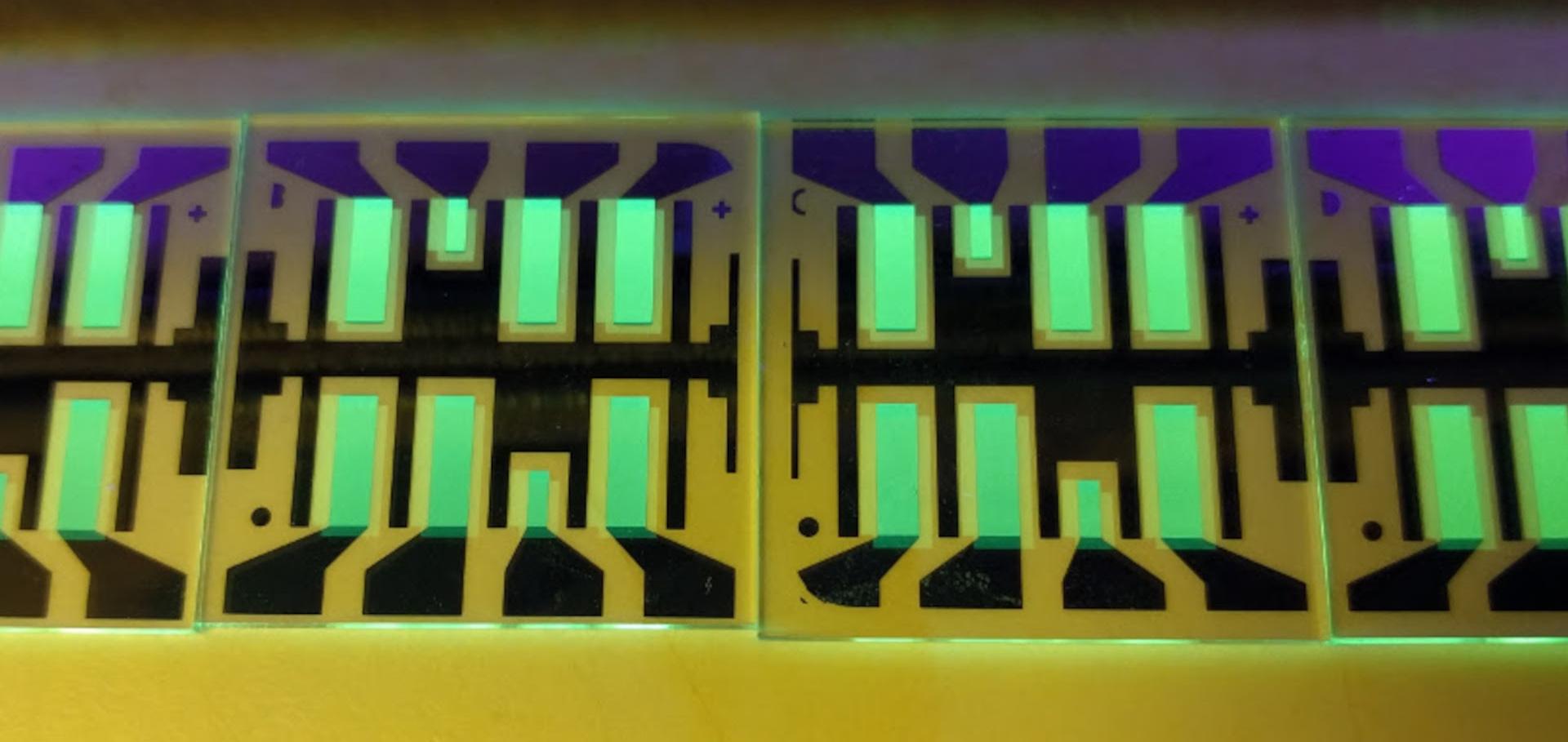Antenna effects and improved efficiency in multiple heterojunction photovoltaic cells based on pentacene, zinc phthalocyanine, and C60
Journal of Applied Physics 106:6 (2009)
Abstract:
For organic solar cells, effective absorption over a wide wavelength range is important. A simple donor-acceptor pair is usually not sufficient to reach this goal. Thus, it would be desirable to utilize multiple photoactive materials in a single cell. In this work, two hole conducting materials, pentacene and zinc phthalocyanine (ZnPc), and electron conducting C60 are chosen to construct three-component heterojunctions aiming at improved effective photon harvesting in organic solar cells. It is found that in pentacene/ZnPc/ C60 multiple heterojunctions, part of the excitons in pentacene reach the ZnPc/ C60 interface, where efficient exciton separation occurs and contributes to the photocurrent (PC). Triplet excitons are confirmed to be the major origin of PC by transient PC response measurements, suggesting that triplet-to-triplet energy transfer from pentacene to ZnPc is responsible for the improved PC of pentacene/ZnPc/ C60 multiheterojunctions. Furthermore, exothermic energy transfer from ZnPc to the lower lying triplet levels of pentacene is employed for extending the absorption range and enlarging the absorption intensity. To realize such a structure, an ultrathin ZnPc layer is embedded in the pentacene film in pentacene/ C60 single heterojunctions, leading to an enhanced quantum efficiency in the long wavelength range compared to the reference cell. These findings pave a way to efficient photovoltaic cells with a wide photoresponse ranging from near UV through the visible to the near infrared. © 2009 American Institute of Physics.Organic thin film photovoltaic cells based on planar and mixed heterojunctions between fullerene and a low bandgap oligothiophene
Journal of Applied Physics 106:5 (2009)
Abstract:
We present the material α-ω -bis-(dicyanovinylen)-sexithiophen (DCV6T) as donor material in organic solar cells. A systematic study on the potential of DCV6T is given for different active layer concepts. DCV6T is a member of a class of acceptor-substituted oligothiophenes, which showed efficiencies of up to 3.4% and open circuit voltages (Voc) of 1.0 V, which were recently reported [K. Schulze Adv. Mater. (Weinheim, Ger.) 18, 2875 (2006)]. To verify the potential of the material (DCV6T), organic solar cells with planar heterojunctions, bulk heterojunctions, and a hybrid-planar-mixed heterojunction are investigated. The planar heterojunction solar cells of DCV6T and C60 show the highest Voc of 0.90 V. The mixed heterojunction solar cells have improved currents but a lower Voc of 0.82 V. The solar cell using the hybrid-planar-mixed heterojunction achieves the best combination of parameters. It has a Voc of 0.88 V, a short circuit current (jsc) of 5.7±0.4 mA cm-2, a fill factor of 41.6%, and a power conversion efficiency of 2.1±0.2%. © 2009 American Institute of Physics.Optimizing the morphology of metal multilayer films for indium tin oxide (ITO)-free inverted organic solar cells
Journal of Applied Physics 105:6 (2009)
Abstract:
We present metal multilayers consisting of aluminum and silver in different combinations serving as semitransparent top contacts for organic solar cells. Scanning electron microscopy, atomic force microscopy, and optical spectroscopy are used to illustrate how ultrathin Al interlayers influence the morphology of Ag layers evaporated on top of organic materials and how closed layers with good conductivity can be achieved. Multilayer metal contacts are used to fabricate top-illuminated small-molecule organic solar cells (SM-OSCs) which reach efficiencies comparable to conventional SM-OSCs that employ tin-doped indium oxide as electrode. It is shown that combinations of Al and Au lead to similar results, suggesting a similar mechanism for the influence on morphological development of both Ag and Au. © 2009 American Institute of Physics.On the Communication of Scientific Results: The Full-Metadata Format
(2009)
Towards efficient tin-doped indium oxide (ITO)-free inverted organic solar cells using metal cathodes
Applied Physics Letters 94:1 (2009)


